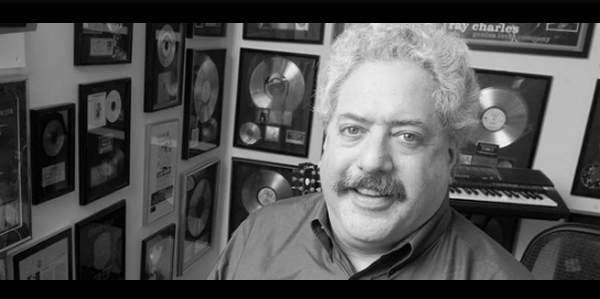Lee Abrams – Rock Radio SuperStar – Part 2

Lee Abrams is one of the most influential thinkers in modern media.
Lee didn’t invent Rock Radio but he might as well have.
In Part 2, Lee talks about innovation and consolidation of the radio business. Lee lists the key building blocks that created each radio revolution…. followed by the elements that killed each revolution.
Greg Smith: Lee, you created many of the features that we still hear on rock radio stations all over the World. Take us through some of those features & the reason for doing them in the first place.
Lee Abrams: Really too many to mention, but the early ones included Block Parties, A to Z, Twofers, Electric Lunch, Psychedelic Supper etc…
There are several reasons for them which include —
-to magnify our musical image
-create exclusive content trademarks
-to ‘own’ artists—if you did Pink Floyd A to Z, you would own them
-expand on artist’s repertoire
-create anticipation as ‘there’s always something cool coming up later today, tomorrow etc.’.
-actually deliver something cool…at least it was very fresh then.
GS: you must have mixed feelings that they are still on the air. Is consolidation of the radio industry to blame for the lack of new ideas & innovation?
 LA: It is shockingly lame. In an era where FM is being challenged by satellite, streaming, Pandora etc., the industry is on creative autopilot; sad, if not sick. Test the records, throw up some billboards and hire a morning show seems to be the guide, in an era where ‘extreme creative’, rooted in the basics, would make more sense. Here’s a piece I wrote about what makes and kills great stations;
LA: It is shockingly lame. In an era where FM is being challenged by satellite, streaming, Pandora etc., the industry is on creative autopilot; sad, if not sick. Test the records, throw up some billboards and hire a morning show seems to be the guide, in an era where ‘extreme creative’, rooted in the basics, would make more sense. Here’s a piece I wrote about what makes and kills great stations;
A Television Magazine in 1952 says “Radio is dead. With The Lone Ranger and Jack Benny going to TV, Bye Bye Radio”.
Well, radio didn’t die. It entered the true golden age. Guys like Todd Storz and Gordon Mc Lendon “re-invented” radio with the Top 40 concept, which is the foundation for most every competitive format 1955-onwards. Storz and McClendon were the marketing, carney and science guys.
The “personality” was actually started by the great black DJ’s of the 40’s like Al Benson on Chicago’s WGES. Guys like Al Benson were rude, crude, and positively engaging. Combine that “personality” with the science, marketing and carney, target it to a mainstream audience, and the explosion was on. TV? Sure, it was red hot…but so was radio as it was re-borne in the mid 50’s on the AM band.
By 1970, AM was tired…burnt out and FM took the lead. It revolutionised radio just as potently as AM did in 1955. Now, FM is tired and burnt out, and the answer is whoever delivers! Part of our job is to help make damn sure that XM Satellite Radio does to FM what FM did to AM…but at the end of the day, assuming equal signal reach, best content is going to win.
Radio keeps re-inventing itself as if by divine intervention. Radio revolutions then chokes itself through greed, inattention and somehow forgetting the building blocks of the revolution that got them there in the first place.
The following is a list of the key building blocks that created each radio revolution…. followed by the elements that killed each revolution.
Besides the “movement” in radio back in 55 and 70, every…yes every great radio station built and possibly destroyed themselves on the following points. By “great” station, I mean stations that lasted 20 years…stations that had huge ratings…stations that others copied.
The point of all this is that XM has the opportunity to revolutionise…and the rules/building blocks are identical to those of what made 1955 and 1970 an era of change. These are things we strive for…, but the following lists are void of the trimmings and get right down to the keys that are the basics to coming through on the promise of amazing radio in the fashion of prior revolutions….
Here are the factors that created the radio revolutions and the great stations:
technology. Transistor radios in ’55…stereo in ’70. Without the transistor radio, AM could have died in 53. Without stereo, FM may never have grown to its current proportion. Digital is now and there’ll be other innovations in the future.
music. A music shift that radio responds to and aggressively popularizes. ’55 rock n roll. “album”, post soul urban and etc.…
production. In 55 it was jingles, news intros, weather jingles, overblown hype (it worked because it was new) …In ’70, the mellowing out…the less plastic sound…as well as a harder more in your face approach. Production is to radio what visuals are to movies and ads. TV ads in particular continually evolve. Vastly new and fresh production had the same effect on the stations. New sound production was as arresting as the new visuals in Kubrick’s 2001 or Star Wars or any shockingly fresh new eye treat…. except for the ears…but the stimulation ends up in the same place–the head. Sound is to radio what colour is to film.
features. a.k.a “trademarks.” The Silver Dollar Survey Countdown and Coke Hit Parade in 50’s… Chicken Man in the 60’s….AT40 in the 70s for example. Block Party weekends in the 80’s.
in sync. Hip. Current. Street savvy. When an early Top 40 or an early FM DJ talked…people listened. The DJs were as cool as the stars.
love/passion. Stations were families. Not unlike bands who love each other at first…but over time want to kill each other (once successful)
audience respect. No tricks. Honesty. Treating listeners as fans and never screwing with them. Never lying about “15 in a row”…being the best by actions and truths not brags. Bragging has so little credibility that it’s a key reason no one “believes” FM promos anymore.
personalities. Biondi, Lujack, Steele etc… other than morning shows, the average joe can’t name a single DJ on any given station today….and “personality” was not limited to mornings. These days there seems to be an unwritten law that says interesting talent on music radio must cease at 10am. Of course there are some music concepts where DJ’s are an irritant, but maybe that’s because they have nothing to say that compliments the music.
the musical information source. You found out about everything musical on the radio not in print or TV.
completeness. In the 50s & 60s it was news, sports, countdowns, million dollar weekends, printed surveys, DJ’s doing hops. In the 70s it was block party weekends, truly sponsoring concerts, King Biscuit, mascots. Now it’s the morning show, billboards up and a tested library.
local. Truly local and involved. Part of the city. (for XM… we think “North America” as our locality)
smarteners. You learned from the radio. It wasn’t BS. Jocks said something. No stupid clichés and mindless DJ chatter.
musical digging. No relying on research and trades. DJs/PDs worked to find great songs to play. imports, flea markets….
blatantly/obviously new ideas. Out with the old. This sound is new….and obviously so.
anticipation. You couldn’t turn a station off in fear of “missing something”
claimed artists. Owned them. Absolutely tied at the hip to them.
attitude through authenticity. Hired people who “got it” and never had to worry about attitude. The attitude was in the blood of the staff. Kind of like our Liquid Metal vs. a “Rock 40” station. XMLM is the audience….at a Rock103 point whatever, they need angry production to mask the fact that the staff has outgrown the music & spirit.
promoting the station. Being smart or aware enough to realize that if you don’t tell the audience…they aren’t going to find out through osmosis. Gotta aggressively and constantly plug events/happenings on your, and in our case other, channels. New Eagles out today…if this were 1965, the channel would play the cut every hour…. go over the top in making it known that you have it!
star pull. The stars visited because they had to and wanted to…not because their label was trying to sell something.
guerrilla tactics. Stunts…FM converter days. Non-traditional ways of attracting attention.
thinking. People were creative. Thinking. Creating new angles and methods. Today, radio is on autopilot.
pride. Willingness to plug the whole station because you’re proud of the whole station.
positive attitude. Whiners or chronic complainers, historically, don’t last long. They get in the way of ‘the mission’. A station needs a positive attitude…swagger. You can hear the negativity in the halls of so many stations.
sense of war/mission. It’s not a job. It’s a battle. Permeates every corner of the building. War footing. Don’t see that much anymore….at least in programming departments. The war seems to be in sales. That’s fine, but that’s like having a navy without an army.
quality radar. A bad piece of production…. a bad or wrong record simply never got on the air (with the exception of the occasional free form station…but those, while interesting never reached the ratings or long term success to be in the “great” class)
graphics. Not really a programming function, but the revolution was characterized by a new “look” for stations.
Ok, those are a few of the key points that made these stations and created the revolution. Don’t get absorbed in “sure, we do that already”…bullshit. We come close and we’re getting there…but these “points” are more than vague concepts…they are critically important to AFDI (Actually Fucking Doing It) …Instead of endlessly talking about it…debating it…etc… AFDI is rooted in common sense and is the antithesis of ‘paralysis by analysis’. It forces us to operate at the speed at 2016, while the traditionalists are, shall we say, less than urgent…until it’s too late.
AFDI. In all due respect, we don’t have a single channel that does all of the above consistently. Often due to manpower & workload…sometimes by not fully grasping the importance of every point. We do sound splendid overall, so don’t take this the wrong way….my point is that a radio revolution is a long term project!
Here are the killers. The things that killed AM and are killing FM creatively:
technology. Not much AM could do, or in time that FM can do. Keeping step with technology has never been more critical.
dated architecture. Airplanes are constantly evolving with new features…so are hotels, films etc….radio tends to rely on its architecture until the damn building is crumbling. Traditional air-lines are a current model of failing architecture.
not embracing new music trends. The failure to understand with the utmost empathy, the changes in music, are deadly. It’s easy for a programmer to age and fight the emerging sounds. It happened in 56 with a failure to accept rock n roll…happened in 69 with a failure to accept the new rock…happens every generation.
tired, out of touch DJs. Their name isn’t hip anymore. They’re out of sync and sad. We all know a few of these. The spirit is drained.
old production. FM is still in 1988 yelling at you with Star Wars laser beam sound effects and big “bite me” voices for example.
abbreviated radio. Music, DJ, spot, jingle, music, DJ, spots, jingle. Over simplified. No meat.
research. There is good research and it is good…but bad research seems to rule terrestrial radio. If traditional radio research worked, there would be no need for XM because the 8,500 stations that rely on it would be so in touch that listeners would love the current state of FM. It’s all about balancing art with science where art rules…but science tells you if your art is working. So much radio research is obviously flawed.
ads. Too many. FM scored big with 8 minutes an hour vs. 18 on AM…FM today? You know that answer! An economic reality? Maybe, but that doesn’t solve the issue.
shifts not shows. If you told the Real Don Steele that his show was a shift, he’d punch you out. Steelworkers do shifts, entertainers do shows.
forgot local. With the exception of the great WGN type stations, most radio has totally gone town-less.
audience love. Forgot how to love & respect the listeners. Started feeding them tricks, clichés and garbage in the name of “numbers. Numbers happen after you deliver the goods—they can’t drive the goods.
manana. In the early AM & FM days…everything was at light speed. Urgency. The fight to stay ahead of the competition…ahead of the curve. Nowadays, the urgency is gone. “I’ll get to it later after I do my schedules” (both are important)
programming not scheduling. Early FM used to have cool sets…. early Top 40 the same. Now, it’s rare to find imagination in a mix.
denial. In 1970 the NAB (National Association of Broadcasters) finally agreed to allow FM stations to be members. History is repeating itself.
“FM is a fad that negatively affects the great AM leaders.” were opening statements at the ’69 NAB in Chicago.
politics. Infighting is a sure sign of the “breakdown” of a revolution or great station.
dumbing down. Lowest common denominator…instead of thinking up. Inform. Lead. Let listeners learn from you.
no point of view: It’s a no rap, no metal, no commercials, no talk weekend. It’s also a no interest weekend.
afraid of new. Afraid of the “creative batting average.” come up with 100 ideas and if 30 work, you’re batting 300. Problem is that few are taking any creative swings…a lot of zero creative batting averages out there.
failed to claim artists. Embracing artists…. not just the obvious ones…re-engaging ear power to seek and deliver. There’s more to owning an artist than playing their latest…or playing the catalogue. Thinking beyond the obvious is lost on all but a few stations.
off course. Forgetting what they are “all about”.
stodginess. CHR or low end stations run by 40 year olds who are still living in 1985 usually makes this happen (Kids’ channels are the exception).
failure to promote the whole station. Why: You don’t care. A “screw it” attitude”
extra mile? Pay me! Sounds like short-term view combined with questionable creative passion.
no pride. Why? Station stinks. Owners don’t care and I’ll never make any money here.
no thinking. Accepting things as they are and “going with the flow” instead of thinking about the flow.
Ok–both lists are not totally complete…but you get the idea…….
So, what’s the point here? To grasp and execute the building blocks and to aggressively avoid the killers. In my opinion, XM will succeed because at least this is what we tell ourselves, and, we strive to deliver: –
it’s natural timing. Just as “natural” as FM in ’70….AM Top 40 in ’55. We are in sync with the radio historical timeline.
we subscribe to the formula/prescription that makes great radio–every time.
We are the 21st century version of 1955 AM or 1970 FM… except we are all of the channels. That’s why I’m so over-the-top about all channels operating at 150%.
We have this opportunity only once…this is it. We must make it work. We should all be shot if we blow this, but we won’t. It’s up to us every minute and every second to deliver the goods as revolutionaries…not just radio guys.
Writing a plan is easy…. executing is hard. Hearing the results from speakers and listeners is magical.
Terrestrial still has over 300 million radios out there. It’s up to new thinkers to create brilliance on the speakers.
New technology + knowing the pulse of North America + delivering a revolutionary new sound that’s in sync with the pulse………….
The revolution will be ours to win.
You can read Greg Smith’s chat with Lee and Part 1 here. In Lee Abrams – Rock Radio SuperStar – Part 3, we explore how Lee re-created radio with XM satellite radio in the USA and he discusses what he looks for in talent.



